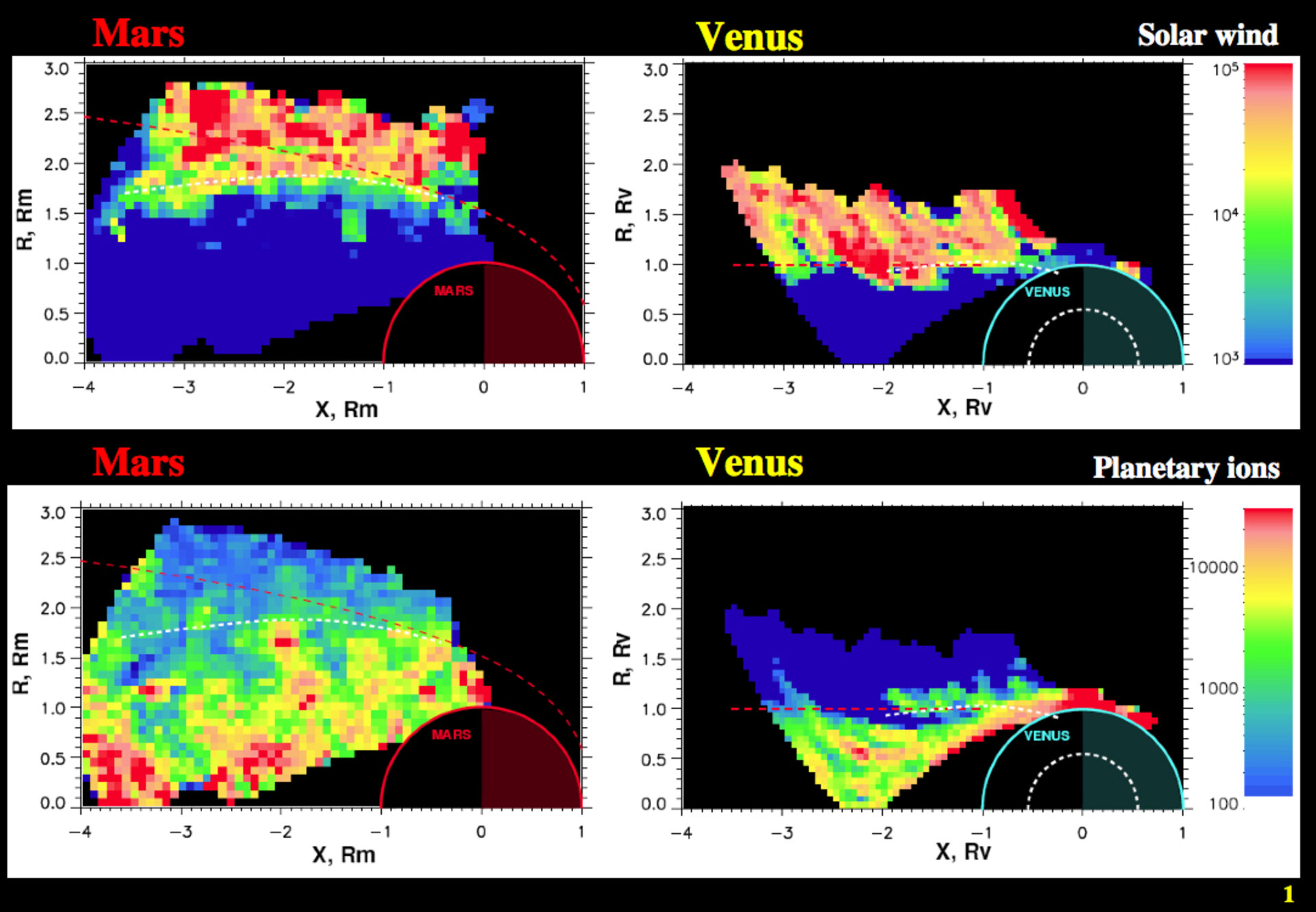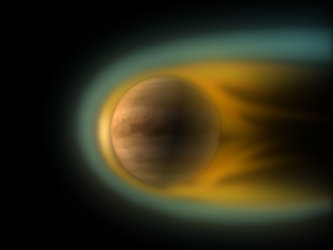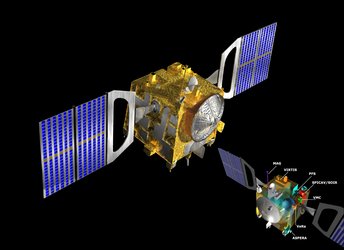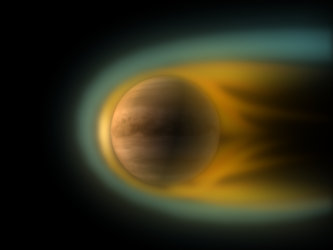

Comparing Venus and Mars
ESA is unique in that it has two missions at Venus and Mars operating simultaneously. Both missions are carrying identical instruments, ASPERA-3
and ASPERA-4, to study the interactions of solar wind with the planets. In addition, Mars Express and Venus Express are the only missions capable
of such measurements at present.
Mars and Venus have similar interactions with the solar wind and similar carbon dioxide atmospheres. Thanks to ASPERA measurements, it was also
possible to discover striking differences.
The plasma (a gas of charged particles) escaping the two planets has very different compositions. At Venus, it is composed of ionised oxygen (O+),
ionised helium (He+) and ionised hydrogen (H+); at Mars the escaping plasma is composed of ionised molecular and atomic oxygen (O2
+, O+) and
ionised carbon dioxide (CO2
+).
The relative size of the interaction region is much larger at Mars than at Venus. The differences are due to different sizes (and thus mass and gravity)
of the planets.





